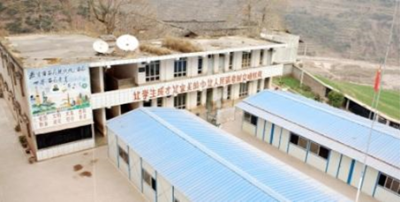Disaster Response and Community Healing -- How Corporations Can Make a Difference in Long-Term Community Recovery
by Michele Robinson-Pontbriand
On May 12, 2008 a massive earthquake hit the impoverished, rural community of Sichuan, China. With a surface wave magnitude of 8.0, it is now known as the Great Sichuan Earthquake and was felt in Beijing and Shanghai, over 1000 miles away. More than 69,000 people lost their lives in the quake, and many homes, buildings and community structures were destroyed.
While I watched the tragedy unfold from afar and supported the calls for disaster relief, a long-time colleague of mine was much closer, and more personally engaged. Xiang-Dong Fu, Keysight Greater China Human Resources & Corporate Services Director, was directly engaged in the immediate response, recovery and long-term engagement of one of the impacted communities. I spoke with him about the initial impact of the earthquake, immediate disaster recovery efforts, the work that our local Keysight China team continues to do in support of ongoing recovery, and the role of corporations in disaster response. Below are some excerpts from our discussion.
What was your initial reaction to the earthquake in Sichuan?
It was a dark time that I remember well. I was the China Corporate Relations Manager for Agilent Technologies (Keysight’s predecessor company) and located at the Beijing, China office. Our hearts ached for the local communities affected. We acted quickly to identify what we could do to help, as individuals as well as a company. I was pleased with the response of our company and employees to funnel donations that provided immediate support to the impacted communities.
However, it was evident quite quickly that the initial support was just the beginning of a long-term healing process for those affected. There was a clear opportunity for the company to take an ongoing role in helping with the rebuild effort.
What was the first step in the long-term corporate engagement?
After the initial disaster response, the company focused efforts for community healing by providing funding and supplies to help rebuild the local Liang-He Country Primary School, which was severely damaged in the quake. The school was rebuilt, classrooms stabilized and brought back to normal operations in 2010. It was an amazing achievement given where it started.
After the school was rebuilt, how did the support change?
We found that the initial disaster response and the rebuilding and stabilization of the school were not the end of the community recovery, or our involvement. In fact, it was the beginning of a long-term engagement between the company and the community as we turned our efforts toward supporting the students and faculty of the school.
In 2014, Keysight China took ownership (from Agilent when the company separated) to continue support for the school through donations and volunteer work. In addition to regular engagement throughout the year with science, technology, engineering and math (STEM) camps and teacher training events, each June a group of Keysight China employees spend 2-3 days volunteering at the school. Activities include student engagement through the Keysight After School program that provides hands-on STEM learning, as well as infrastructure maintenance work such as preparing student lunches, library cleaning and building painting.
In 2018, volunteers had the opportunity to meet with the local education administrative board to discuss what more could be done for the students. The government attendees of that session recognized Keysight’s contributions, with one stating that the school had “received plenty of donations from many enterprises after the massive earthquake in 2008, but only Keysight makes a continuous contribution to us over the years.” This is the comment that caused me to pause – “over the years”.
What is Keysight’s engagement with the school today and into the future?
As the years have passed I am proud Keysight has been part of the substantial efforts to not only rebuild this school, but to actively participate in the long-term recovery of the community. We continue regular engagements with the school as well as our annual volunteer event, which in 2019 included 18 Keysight employee volunteers. 2020 will be the 10th anniversary of the school rebuild, and as such we intend to organize a special event to celebrate the long-lasting friendship between Keysight and the school.
How has this engagement affected the students, community and Keysight?
I personally observed how the students, from those impacted at the initial event to those that weren’t even born at the time, have become more confident and optimistic of their future over the years. With a rebuilt school and STEM education support from Keysight, students are engaged in learning, which in turn has supported community healing.
From a company perspective, it has also been rewarding to support employee interest in continuing these efforts and drive positive social impact throughout the last decade since the quake. The engagement between Keysight and this community even led to the school to be renamed The Keysight Hope School.
As a leading technology company, it is important understand the impacts our community activities have not to only inspire children to pursue STEM careers, but to also provide pathways to better lives, educational facilities and opportunities to develop healthy self-esteem. While initial corporate disaster response is always needed, sometimes such tragedies require longer-term recovery engagements to support community healing.




